Archivo de noticias y eventos
851 - 900 de un total de 2402
También puede acceder a la lista de noticias publicadas en los medios relacionadas con el Instituto de Astrofísica de Andalucía - CSIC.
Pages
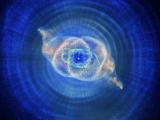
|
29/11/2018 - 12:30
Spirals, rings and arcs around evolved stars We searched the complete archive of the HST and Spitzer to characterise rings and arcs around evolved low-mass stars (AGB stars, proto-PNe and PNe), study their physical properties and address their formation mechanisms. In this talk, we present the observational results of our survey, the predictions of simple radiation-hydrodynamic simulations as well as the future of the project. Dr. Jesús Toala |

|
22/11/2018 - 12:30
Time variable processes of Sagittarius A*, the massive black hole at the centre of the Milky Way Date: 22/11/2018 . 12:30 hrs Speaker: Dr. Gunther Witzel Affiliation: Max-Planck-Institute for Radioastronomy, Bonn, Germany. Dr. Gunther Witzel |

|
07/02/2019 - 12:30
Mars UV atmospheric emissions In this talk we will summarize our recent analysis of observations performed by the instrument SPICAM on the Mars Express mission on the dayside of the planet, and by the instrument IUVS on board MAVEN on the nightside of the planet. Dr. Francisco González Galindo |
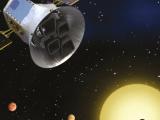
|
20/09/2018
El instrumento CARMENES recibe las primeras alertas de detección de exoplanetas de la misión TESS (MIT-NASA) Se espera que la misión TESS, desarrollada por el Instituto Tecnológico de Massachusetts (MIT) y la NASA, encuentre unos mil quinientos planetas en torno a otras estrellas en sus dos años de operaciones. El equipo del espectrógrafo CARMENES, situado en el Observatorio de Calar Alto, ha comenzado a recibir las alertas para confirmar y analizar las detecciones de TESS |

|
13/12/2018 - 12:30
RESULTS FROM THE RADIOASTRON AGN POLARIZATION KSP: A LIMB-BRIGHTENED JET IN 3C273 The RadioAstron active galactic nuclei (AGN) polarization Key Science Project (KSP) aims at exploiting the unprecedented angular resolution provided by RadioAstron to study jet launching/collimation and magnetic-field configuration in AGN jets. The targets of our KSP are some of the most powerful blazars in the sky. I will present observations at 1.4 GHz and 22 GHz of 3C273, performed in 2014, designed to reach a maximum baseline of... Gabriele Bruni |

|
12/04/2019 - 12:30
Imaging a black hole with the Event Horizon Telescope We have imaged the shadow of the central black hole in the radiogalaxy M87. This required assembling the Event Horizon Telescope, a global VLBI array observing at a wavelength of 1.3 mm capable of achieving an angular resolution of 20 microarcsecond (uas). We have resolved the central region of M87 into an asymmetric bright emission ring with a diameter of 42+-3 uas, which is circular and encompass a central depression in brightness with a flux... Dr. Jose Luis Gómez |
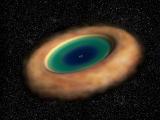
|
17/01/2019 - 12:30
AGN TORUS DETECTABILITY AT SUB-MILLIMETER WAVELENGTHS: WHAT TO EXPECT FROM ALMA CONTINUUM DATA In this talk I will show you a study on the detectability of the emission associated with the AGN dusty structure at sub-mm wavelengths using ALMA, in a theoretical and observational way. Dr. Alice Pasetto |
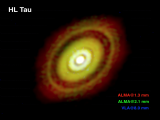
|
24/01/2019 - 12:30
Observing Planet Formation with the VLA in the era of ALMA In only four years, ALMA has radically changed the field of planet formation. We are currently obtaining very detailed images of the dust emission in protoplanetary disks with an unprecedent sensitivity and high angular resolution. Dr. Carlos Carrasco |

|
10/09/2018
El proyecto OTELO desvela una población de "galaxias fantasma" en el universo Gracias al instrumento OSIRIS, instalado en el Gran Telescopio Canarias, se ha realizado el censo de galaxias más profundo hasta la fecha. Los resultados de OTELO podrían afectar a nuestro actual conocimiento sobre la formación y evolución de las galaxias |

|
21/02/2019 - 12:30
Planck Cosmological Legacy: the next CMB polarization experiments The results and products derived from the third and final release of data from the Planck mission will be reviewed with emphasis on the implications for cosmology. Prof. Enrique Martinez |

|
27/09/2018 - 12:30
ASKAP and HI in Galaxies I will divide my talk into three parts, starting with an overview of CSIRO’s Australia Telescope National Facility (ATNF), especially our telescopes (ASKAP... Baerbel Koribalski |

|
06/08/2018
El extraño caso de HuBi1, un cadáver estelar vuelto del revés La estructura física de una nebulosa planetaria producida por la muerte de una estrella similar al Sol es opuesta a la habitual en estos objetos. Una investigación encabezada por el IAA-CSIC concluye que su progenitora es una estrella renacida. |

|
25/07/2018
La Presidenta de la Junta de Andalucía visita el Instituto de Astrofísica de Andalucía Los equipos de gobierno autonómico, provincial y municipal han visitado las instalaciones del centro con motivo de la concesión de la acreditación Severo Ochoa al Instituto de Astrofísica de Andalucía |
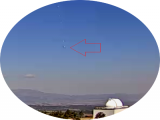
|
11/07/2018
Superbólido del 9 de julio de 2018 La definición de la trayectoria apunta a que se trata de un fragmento cometario |
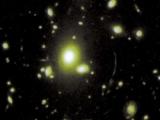
|
10/07/2018
Una región del universo extraordinariamente densa pone a prueba la teoría de formación de estructuras en el cosmos Se ha hallado un halo de materia oscura en torno a un cúmulo de galaxias seis veces más denso de lo que se esperaba. Este hallazgo muestra que debe haber mecanismos muy eficaces, no contemplados hasta ahora, para la acumulación de materia en torno a las grandes estructuras que pueblan el universo |
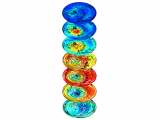
|
18/10/2018 - 12:30
An unusual autumn Elevated Stratopause Event (ESE) IAA Seminar Date: 18/10/2018 . 12:30 hrs Speaker: Dr. Maya Garcia Comas Dr. Maya García Comás |

|
11/10/2018 - 12:30
The planetary nebula HuBi 1, a rebel with a cause Planetary nebulae, the descendants of low- and intermediate-mass stars, have characteristic onion-like ionization structure, with the highest ionization species closer to the central star. This is true for all planetary nebulae, but HuBi 1, which shows an inverted ionization inner shell. There is a reason for this oddity, a peculiar stellar evolution of its central star, which makes HuBi 1 the missing link of the population of cool C-rich... Dr. Martin Guerrero |
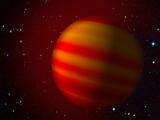
|
03/07/2018
Hallan que la atmósfera de Kelt-9b, el planeta más caliente conocido, está siendo arrastrada hacia su estrella Similar a Júpiter, Kelt-9b es más caliente que algunas estrellas. Gracias al instrumento CARMENES del Observatorio de Calar Alto se ha detectado en torno a Kelt-9b una extensa envoltura de hidrógeno que escapa y está siendo capturada por la estrella |

|
06/09/2018 - 12:30
Optical spectroscopy of local type-1 AGN LINERs The Balmer emission originated in the broad line region (BLR) of active galactic nuclei (AGNs) could be either weak and difficult to detect, or even absent, for low luminosity AGNs, as low ionization nuclear emission-line regions (LINERs). This makes LINERs challenging to fit in the AGN unification scheme. Moreover, a long debate can be found in the literature proposing different ionization sources at the origin of optical emission lines and no... Dr. Sara Cazzoli |
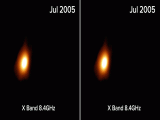
|
25/10/2018 - 12:30
The Arp299B-AT1 puzzle: First resolved imaging of a tidal disruption event Date: 25/10/2018 . 12:30 hrs Speaker: Dr. Miguel Angel Pérez-Torres Affiliation: IAA-CSIC, Spain Dr. Miguel Angel Pérez-Torres |
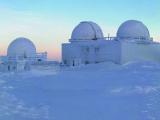
|
25/06/2018
Este verano, súbete a un observatorio Abierto el plazo de reservas para las visitas de verano al Observatorio de Sierra Nevada y a la radioantena de 30 metros IRAM |
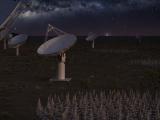
|
19/06/2018
España se adhiere a la organización internacional Square Kilometre Array SKA es un proyecto científico y tecnológico a escala mundial para construir el radiotelescopio más grande del mundo. La participación española ha estado liderada por el Instituto de Astrofísica de Andalucía (IAA-CSIC) |
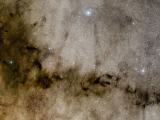
|
19/06/2018
La distribución de las estrellas en los cúmulos se establece mucho antes de que las estrellas comiencen a brillar El análisis de la nebulosa de la Pipa, una región de formación estelar muy temprana, ha permitido confirmar que la densidad de los núcleos preestelares determina la geometría de los cúmulos |

|
15/06/2018
Investigadores del IAA, galardonados con los premios "Granada, ciudad de la ciencia y la innovación" Josefa Masegosa y Juan Pedro Cobos han sido galardonados en las categorías "Mujeres en la Ciencia" y "Jóvenes investigadores" |
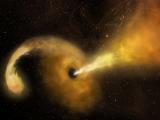
|
14/06/2018
Observan la erupción producida por un agujero negro al desgarrar una estrella Se fotografía, por primera vez, la formación y expansión de un chorro de material expulsado por un agujero negro supermasivo tras destruir una estrella. El trabajo, encabezado por la Universidad de Turku y el Instituto de Astrofísica de Andalucía (IAA-CSIC), se publica en la revista Science |
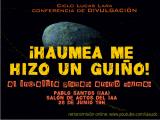
|
28/06/2018 - 19:00
¡Haumea me hizo un guiño! El increíble planeta enano Haumea Un guiño estelar a 7600 millones de kilómetros: el increible planeta enano Haumea Pablo Santos Sanz |
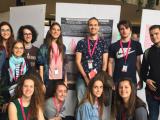
|
07/06/2018
Congreso final del proyecto PIIISA Proyecto de Iniciación a la Investigación e Innovación en secundaria en Andalucía |
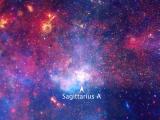
|
07/06/2018
Los extraños objetos del centro de nuestra galaxia: nubes de gas que se comportan como estrellas Podría tratarse de estrellas "hinchadas" por las condiciones de gravedad extremas en torno a Sagitario A*, el agujero negro supermasivo del centro galáctico. Se han presentado, en la reunión de la Sociedad Astronómica Estadounidense (AAS), los resultados obtenidos sobre tres de estos objetos tras once años de observaciones con el telescopio Keck (Hawaii) |
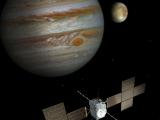
|
29/05/2018
El IAA, única institución española que participa en JUICE (ESA), culmina la fase de ingeniería de su contribución para la misión JUICE, misión de la Agencia Espacial Europea (ESA) que se lanzará en 2022, estudiará Júpiter y sus lunas para analizar las posibilidades del desarrollo de la vida alrededor de los planetas gigantes gaseosos. El Instituto de Astrofísica de Andalucía (IAA-CSIC) participa en dos de los instrumentos de la misión, el altímetro láser GALA y la cámara JANUS |

|
28/06/2018 - 12:30
Extreme quasars at high redshift The study of the AGN accreting close to the Eddington limit (L/LEdd~1) has taken an important role, due to their potential use as standard candles for cosmological applications. With the purpose to understand the physics of extreme quasar, we perform a spectroscopic analysis of a sample of highly accreting quasars at high redshift (z~2–3). Our sample were observed with the OSIRIS spectrograph on the GTC 10.4 m telescope located at the... Dr. Maryloli Martinez Aldama |

|
13/09/2018 - 12:30
The peculiar case of the active galactic nuclei in PBC J2333.9-2343 Under unification schemes, active galactic nuclei (AGN) can be explained by orientation effects. However, some sources show properties at different frequencies that led to incongruent classifications and cannot be explained by such unification scheme. This is the case of PBC J2333.9-2343; its optical spectrum is of a type 2 AGN but its X-ray spectrum does not show signs of absorption, and in the radio it has many features typical of a blazar but... Dr. Lorena Hernández-García |
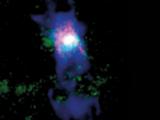
|
15/05/2018
Se detecta, en la galaxia Arp 299-A, un gigantesco flujo de gas generado por numerosas explosiones de supernova La galaxia Arp 299-A, que se halla en proceso de fusión con otra galaxia (Arp299-B), destaca por sus intensos brotes de formación estelar y por su alta tasa de producción de supernovas. Nuevas observaciones en radio han permitido detectar una estructura filamentosa que emana del núcleo, que se interpreta como un flujo de gas a alta velocidad |

|
20/09/2018 - 12:30
Slender CaiiH fibrils observed by SUNRISE II The special observing conditions of the SUNRISE observatory allow obtaining observations in the UV with unprecedented temporal stability and spatial resolution. On its second scientific flight, the Sunrise Filter Imager (SUFI) was used to record a time series of narrow-band intensity images in the CaiiH line for approximately one hour at a cadence of 7 seconds. This unique dataset enabled us to characterize the morphological properties of 598... Dr. Ricardo Gafeira |

|
10/05/2018
El documental ‘El enigma Agustina’ llega a los centros educativos como herramienta de divulgación científica La Delegación de Educación y el IAA ponen en marcha una iniciativa para utilizar la película como recurso didáctico en colegios e institutos de la provincia |
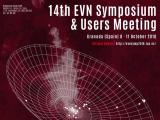
|
08/10/2018 - 11/10/2018
14th EVN Symposium & Users Meeting Granada |
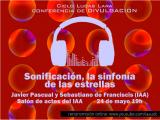
|
24/05/2018 - 19:00
Sonificación, la sinfonía de las estrellas En esta charla introduciremos el sonido como superposición de ondas mecánicas cuyas frecuencias dependen del tamaño y de las propiedades de la cuerda o cavidad del instrumento que la produce. Comentaremos la analogía entre una estrella y un instrumento musical. Javier Pascual y Sebastiano de Franciscis |
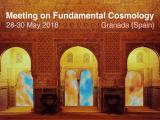
|
28/05/2018 - 30/05/2018
https://cafpe.ugr.es/fcosmology18/ Granada |
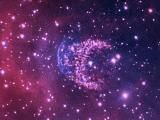
|
03/05/2018
¿Nebulosa planetaria o nova clásica? Un estudio encabezado por el IAA-CSIC del objeto J210204.7, identificado inicialmente como nebulosa planetaria, apunta a que en realidad se trata de una nova clásica, un fenómeno totalmente distinto |

|
17/05/2018 - 12:30
The Empirical Grounds of Supernova-Gamma-ray Burst connection I will review the status of the SN-GRB connection. Present data suggest that SNe associated with GRBs form a heterogeneous class of objects including both bright and faint Hypernovae. Some of the special conditions requested by a massive star to become a GRB are discussed. Prof. Massimo Della Valle |

|
25/04/2018
Se relaciona la exposición nocturna a la luz azul con los cánceres de mama y próstata La investigación, en la que participa el Instituto de Astrofísica de Andalucía, utilizó fotografías tomadas por astronautas para evaluar el alumbrado exterior de Madrid y Barcelona |

|
14/06/2018 - 12:30
PLATO: de cazar a domesticar sistemas planetarios Today, stellar and planetary physics enjoy an unprecedented boost thanks to space technology. From the first missions such as MOST and CoRoT, to Kepler / K2 and the recently launched TESS, hundreds of new exoplanets have been detected by photometric transits, and thousands more are to be confirmed. The main objective of these missions are to find new planetary systems, around other stars similar to our Sun. Logical detection bias due to... Dr. Juan Carlos Suárez |

|
07/06/2018 - 12:30
Physical and statistical properties of High Frequency Peaked blazars In the class of active galactic nuclei (AGNs), blazars are the most extreme objects, with their relativistic jets closely aligned to our line-of-sight. The emission of blazars is mostly non-thermal, spanning the entire electromagnetic spectrum, and is often linearly polarized providing us with important insights on the magnetic field structure. An emerging radio-loud AGN population is represented by high synchrotron peaked (HSP) blazars,... Dr. Lico |
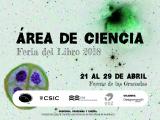
|
21/04/2018
El IAA inaugura la Feria del Libro y coordina por tercer año el Área de Ciencia El Instituto de Astrofísica de Andalucía, el Estación Experimental del Zaidín, la Feria del Libro y Cultura Científica CSIC organizan la tercera edición del Área de Ciencia de la Feria del Libro, que se ubicará en la Fuente de las Granadas. El director del IAA, Antxon Alberdi, pronunció el discurso inaugural de la Feria |

|
10/09/2018 - 13/09/2018
HINODE - 12 THE MANY SUNS Granada |
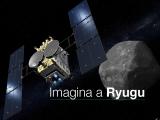
|
09/04/2018
Concurso "Imagina a Ryugu" |

|
10/05/2018 - 12:30
Stellar activity blurring our insight into the properties of exoplanets Stellar activity can provide important information regarding the structure, evolution, and the atmosphere of the stars, as well as their magnetic filed and mechanisms that generate them. On the other hand stellar activity introduces severe astrophysical noise in the collected data in the quest for what might be called Earth 2.0. In this talk, I will present main obstacles and difficulties which stellar activity poses on the detection and... Dr. Mahmoudreza Oshagh |

|
26/04/2018 - 12:30
Lightning – from Its Base to Space Lightning has been studied for centuries with surprisingly meager progress since the early breakthroughs of Franklin. There are numerous reasons for this lack of progress: lightning is complex, it is very energetic with large peak power - hard for in-situ probes to survive, it is spatially and temporally sparse – hard to place a sensor in an optimal location. However, modern technological advances and innovations have led to new remote... Prof. Hugh Christian |

|
03/04/2018
Despega la misión ASIM (ESA), que estudiará las descargas eléctricas en la alta atmósfera desde la Estación Espacial Internacional El lanzamiento de la misión tuvo lugar ayer 2 de abril a las 22:30 desde el Centro Espacial Kennedy en Florida (EEUU). El Instituto de Astrofísica de Andalucía (IAA-CSIC) participa en el análisis de los datos de la misión y mediante el apoyo desde tierra con instrumentos propios |

|
18/04/2018 - 12:30
Recreating the Early Mass-Loss Histories of pre Planetary Nebulae Hubble images of the amazing symmetries of young planetary nebulae have captured the imagination of the public. Scientifically, unravelling the physics of their ejection histories is the ultimate goal. I will present detailed surprisingly simple hydro outflow models that capture both the present shapes and the flow kinematics of several and very disparate nebulae. Prof. Bruce Balick |

|
22/03/2018
Se estrena "El enigma Agustina", una película producida por el Instituto de Astrofísica de Andalucía (IAA-CSIC) Esta mañana se ha presentado, en una rueda de prensa en el Instituto Andaluz de la Mujer, la película "El enigma Agustina", que se estrenará hoy a las 20:30 en el Teatro Alhambra |